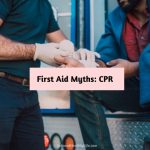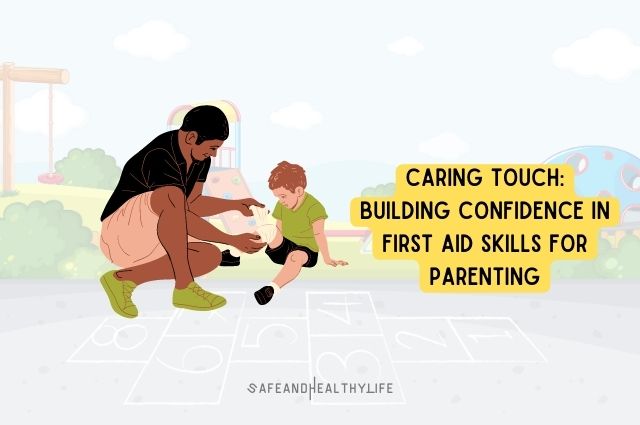
You may also like:
- Why Learning First Aid is Important
- What Are the Most Important Essentials Of First Aid Kit
- Types of First Aid Training Courses
When it comes to parenthood, the importance of preparedness cannot be overstated.
A crucial aspect of this preparedness lies in understanding basic first-aid skills. These skills can mean the difference between a minor incident and a major catastrophe.
There’s an undeniable peace of mind that comes with knowing you can efficiently react in a moment of crisis to ensure your child’s safety.
In this blog post, we will discuss the top eight critical first aid skills every parent should know.
Additionally, we will highlight the value of enrolling in an online baby and child first aid course, which can further equip you with invaluable skills to protect and care for your little ones.
1. Expertly Treating Open Wounds
In the event of minor cuts and scrapes, a trip to the emergency room is often unnecessary.
Instead, provide your little one with the comfort they need by practicing basic first aid. Begin by washing your hands thoroughly and gently cleansing the wound to remove any debris.
Follow this by applying an antibiotic ointment and covering the wound with an adhesive bandage.
In case of bleeding, elevate the wound and apply gentle pressure using sterile gauze or a clean cloth for 15 minutes.
For deeper wounds, signs that your child may require stitches include:
- The wound appears deep
- The cut exceeds half an inch in length
- The wound edges require pulling together to cover exposed tissue
- The wound has uneven edges
- Bleeding persists even after 15 minutes of direct pressure application
Remember, never attempt to remove foreign objects from wounds. Seek medical attention if you suspect infection or if the wound is caused by an animal or human bite, or a rusty object.
2. Choking and CPR
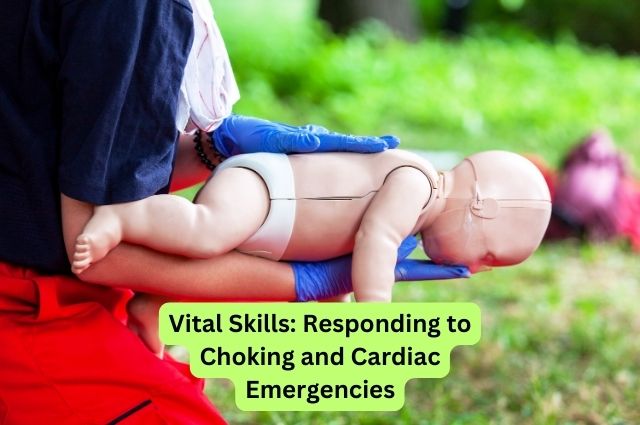
Choking is an alarming event that can happen to anyone, including babies and young children.
Learning the Heimlich Manoeuvre for children and infants, as well as understanding when and how to apply it, is a vital skill.
Moreover, knowing how to perform cardiopulmonary resuscitation (CPR) can potentially save your child’s life in the event of cardiac or breathing emergencies. Related.
It’s important to note that the technique for infants and children varies from that used for adults.
3. Treating Burns
From hot surfaces to scalding liquids, the risk of burns is omnipresent in the household environment – knowledge of how to react is crucial.
The primary steps include cooling the burn under cold running water for at least 10 minutes, covering the area with a clean non-stick bandage, and seeking medical advice.
4. Dealing with Fractures
Play and exploration can sometimes lead to unfortunate incidents like fractures. Being able to recognize a fracture and respond appropriately is key.
Never attempt to realign the bone – instead, immobilize the area if possible, apply a cold compress to reduce swelling, and get medical help immediately.
5. Treatment for Stings and Bites
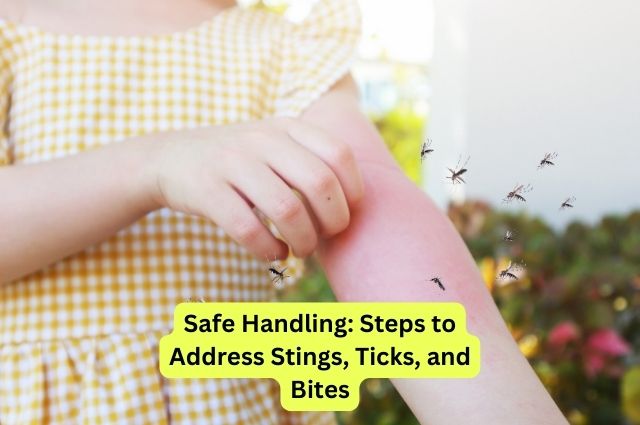
Bees, Wasps, and Hornets
If stung, don’t attempt to pull out the stinger. Instead, gently scrape it away using a firm object. Applying a cold compress to the sting area can help alleviate pain.
Monitor for severe allergic reactions, such as dizziness, numbness, or difficulty breathing.
Ticks
Regular tick checks are essential if your child has been in grassy or wooded areas. Use tweezers to remove ticks close to the head and clean the area with soap and water. Contact a pediatrician if a fever or rash develops.
Spiders
Most spider bites result in mild reactions. Wash the area and apply cool compresses. For severe bites from black widow or brown recluse spiders, seek medical help.
6. Recognizing Signs of Allergic Reactions
An allergic reaction can range from mild discomfort to a potentially fatal anaphylactic shock.
Learning to recognize symptoms such as hives, swelling, difficulty breathing, or unconsciousness can lead to faster medical intervention.
7. Managing Fever
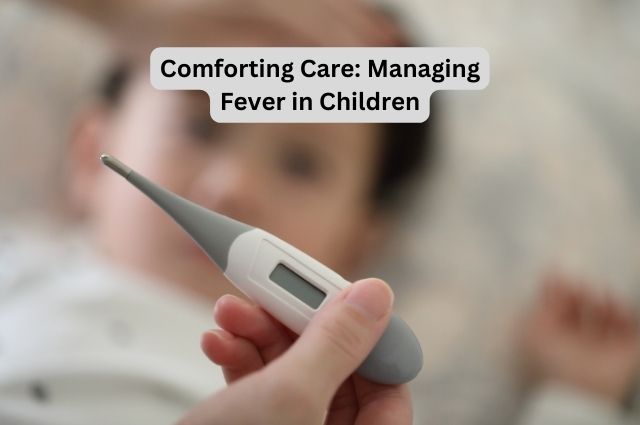
Measure your child’s temperature to determine if they have a fever requiring attention.
Temperatures above 100.5°F may indicate infection, and in the context of COVID-19 resurgence, testing may be needed.
Keep your child comfortable with light clothing, hydration, and fever-reducing medication as needed.
8. Controlling Bleeding (Cuts, Scrapes, And Bruises)
From minor cuts and scrapes to more serious wounds, controlling bleeding is a vital first aid skill. Parents should know how to apply pressure to the wound with a clean cloth or bandage, and when to seek additional medical attention.
While this blog post provides an essential overview of critical first aid skills, nothing substitutes for comprehensive training.
We strongly recommend enrolling in an online first aid course for a more detailed understanding of these skills.
These courses offer a blend of theoretical knowledge and practical demonstrations, helping you to not just learn, but master these essential skills.
Remember, being prepared doesn’t mean you’re expecting the worst; it means you’re equipped to deal with it.
Your child’s safety is worth every moment invested in learning these critical first-aid skills.
Effective Care for Nosebleeds:
Nosebleeds, often caused by nose picking or dry air, are common among children aged 3 to 10. While generally not serious, nosebleeds can be managed at home with proper care. If your child experiences a nosebleed, avoid tilting their head back, as this could lead to vomiting. Instead, have them sit upright, slightly lean forward, and pinch their nose just below the nasal bone for around 10 minutes. Refrain from allowing them to blow their nose, as this can exacerbate the bleeding. Applying Vaseline to the nostril once the bleeding has ceased can help prevent further dryness.
Conclusion
Parenthood is a journey filled with joyful moments and unforeseen challenges. While we strive to protect our children, accidents can happen unexpectedly.
Equipping ourselves with essential first aid skills can empower us to react effectively in moments of crisis, potentially making a life-saving difference.
Whether your child is a baby, toddler, or older, consider obtaining a First Aid and CPR certification. These certifications offer training for adults, children, and infants, ensuring that you are well-prepared to handle emergencies.
Remember, learning and mastering these vital first-aid skills can provide you with the confidence and knowledge needed to safeguard your child’s well-being in times of need.
About The Author:
Stacey Smith is a freelance health writer. She is passionate to write about women’s health, dental health, diabetes, endocrinology, and nutrition and provides in-depth features on the latest in health news for medical clinics and health magazines.

